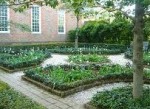 If you have visited colonial gardens such as those in Williamsburg you may have noticed the low beds edged with boxwood often with a tree in the center. In the spring the bed is filled with flowering bulbs. These beds are parterres. The word is French and means “low to the ground”. At first, the word denoted to a specific kind of design and was meant to be viewed from above but now it is used in a broader sense to refer to any compartmentalized garden bed.
If you have visited colonial gardens such as those in Williamsburg you may have noticed the low beds edged with boxwood often with a tree in the center. In the spring the bed is filled with flowering bulbs. These beds are parterres. The word is French and means “low to the ground”. At first, the word denoted to a specific kind of design and was meant to be viewed from above but now it is used in a broader sense to refer to any compartmentalized garden bed.
There are several different types of parterres with variations of each type. The simplest version of this design feature can be seen in illuminated manuscripts written by Pietro de Crescenzi in the 14th century. Rectangular beds are laid out neatly in a grid with wooden planks edging and defining the sides. Inside the beds are trees and other plants
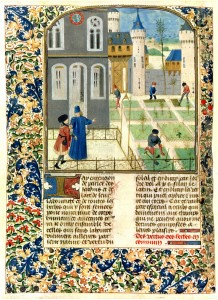
A picture of the garden of Burgermeister Schwind ca. 1641 shows beds bordered by narrow walkways and divided into complex designs featuring many different shapes. Such parterres were called parterre a pieces coupees, or parterre of “cut pieces”. Flowers fill the beds and are the main interest.
In a Dutch herbal published in 1614, the flowers are distinctly shown in geometric parterres. Tulips are dominant as might be expected in the period leading up to tulipomania.
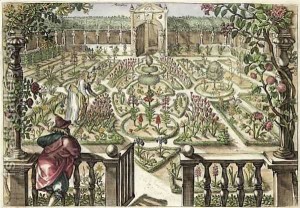
A even more whimsical approach to parterre was shape is seen in the work of Johann Jokob Walther dating to 1650 and showing a Dutch garden. The shapes resemble fruits and seem to have tulips and crown fritillaria, considered to be one of the best garden plants of the time.
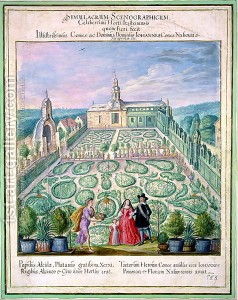
A different approach entirely is shown by the painting of Johannes Janson in 1766. Shrubs, probably dwarf boxwood, are used to create an intricate curvilinear design with a background of sand or gravel. These ornate parterres are known as broderie parterre and were very popular in the Baroque period in France.
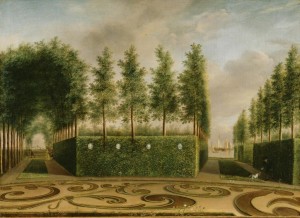
The English, with their climate that favors a lush growth of grass, developed a version of the parterre that consisted of lawn with an ornamental design created by pathways. Such parterres are seen on the right of the painting of Bernardo Belloto’s View of Vienna from the Belvedere, dating to 1758.
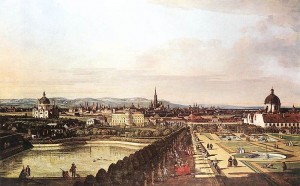
A unique and interesting variation of the parterre concept is illustrated by View of the Chateau of Versaille, ca. 1675, that shows a parterres d’eau, or water parterre. It consists of a large pool with four small pools complete with fountains. Plants seem to be missing entirely.
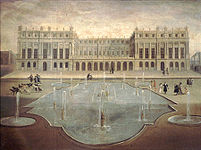
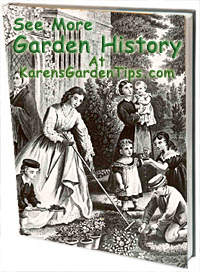 As you become more aware of parterres you will notice them is some very unexpected places. Many of the local gas stations and other businesses, for example, use parterres for their flower display often employing gravel as a background. If you visit Disney World the big floral parterre featuring Mickey Mouse can’t help but catch your eye. Parterres may seem formal and old fashion but they are still very much a part of our world.
As you become more aware of parterres you will notice them is some very unexpected places. Many of the local gas stations and other businesses, for example, use parterres for their flower display often employing gravel as a background. If you visit Disney World the big floral parterre featuring Mickey Mouse can’t help but catch your eye. Parterres may seem formal and old fashion but they are still very much a part of our world.